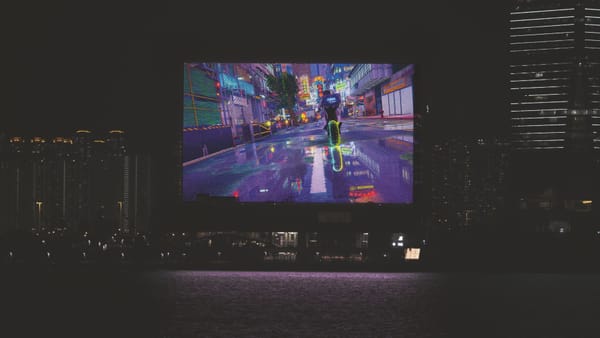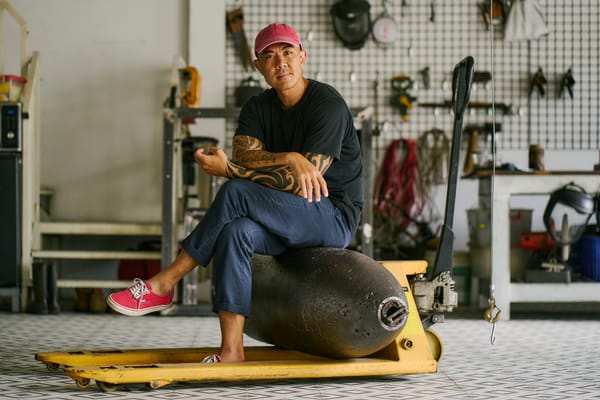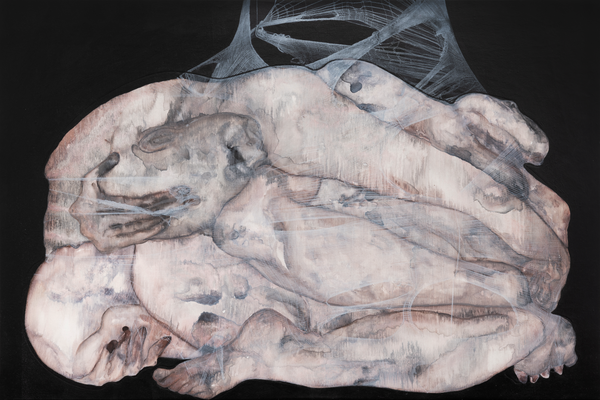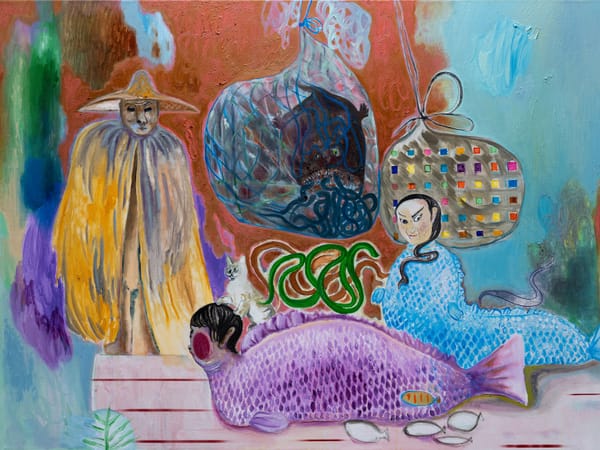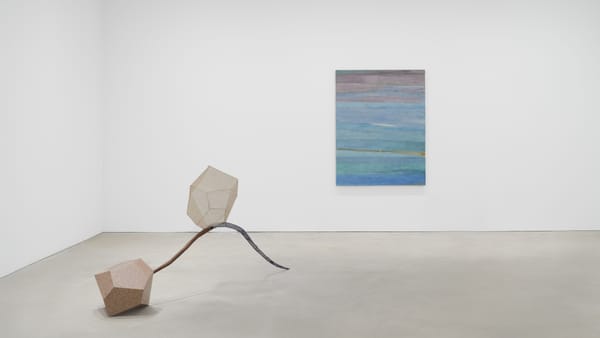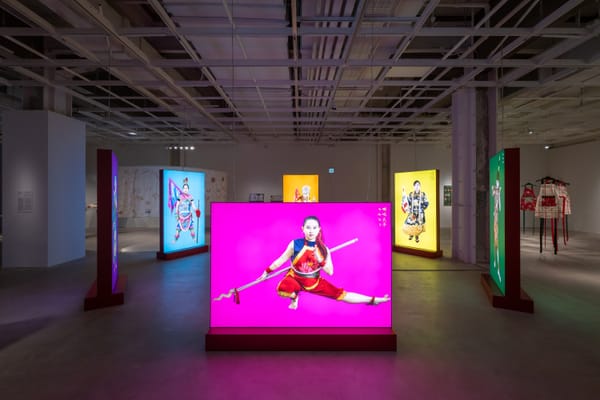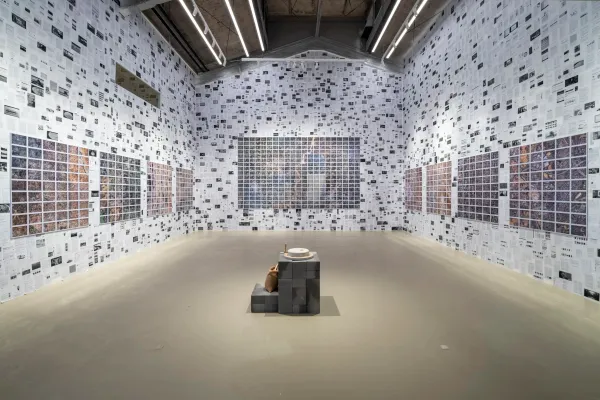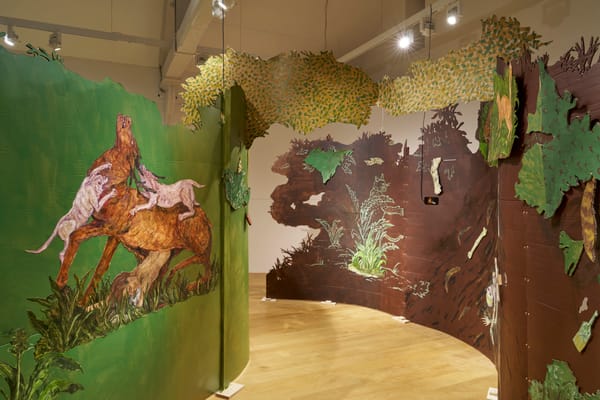Shows
Rose Nolan’s “Breathing Helps”

Rose Nolan
Breathing Helps
TarraWarra Museum of Art
Healesville, Victoria
Aug 9–Nov 9, 2025
TarraWarra Museum of Art’s Rose Nolan survey offered a wry, matter-of-fact reminder in its title: “Breathing Helps.” The phrase captured the playful openness and deep concern for the viewer’s experience that underscores the Australian artist’s practice, which encompasses bold works across installation, photography, and text-based pieces. For the first time in Nolan’s 40-year career, these diverse modes of creation were presented together in a major exhibition that spanned her early experiments with everyday materials to new commissions.

Highlights included the iconic To Keep Going Breathing Helps (circle work) (2016–17), an immersive five-meter high installation of oversized stitched hessian circles painted in her signature minimalist red-and-white palette, suspended in a winding formation from the ceiling. As visitors moved through the drapery, they encountered text fragments of phrases Nolan overheard in public. The work exemplifies Nolan’s distinct aesthetic and conceptual inheritance of Russian Constructivism and Swiss modernist design, alongside her ongoing use of everyday materials.

Another notable piece, An Awkward Screen (2011), resembles a room divider that unfolded across the space. Each hinged panel features the word “AWKWARD” rotated 90 degrees, creating a tension between the text and its spatial configuration. The sculpture’s commanding presence belies its humble material of handcut cardboard, encapsulating Nolan’s explorations of temporary architecture and emphasis on cost, waste, and manual labor.
Working closely with TarraWarra’s director and curator, Dr Victoria Lynn, Nolan shaped the exhibition not as a straightforward survey but as a site-responsive project that intertwined her earlier works with new pieces. The interactive approach underlined her longstanding engagement with scale, repetition, and materiality, while also inviting dialogue with other disciplines. One such dialogue was with choreographer and performance artist Shelley Lasica, who was commissioned to create COLLOQUY (2025), a series of performances that flowed in and out of the galleries. This marked the first collaboration between Nolan and Lasica, despite their practices having developed in parallel since the late 1980s. Lasica’s performers blurred the boundaries between exhibition space, artworks, and audience, heightening awareness of movement and presence while encouraging reflection on how visitors encountered Nolan’s installations.

The museum itself amplified these aspirations. Nestled in Victoria’s Yarra Valley on Wurundjeri Country, TarraWarra’s curved forms and rammed-earth walls extend the surrounding landscape creating a strong connection to the Ancestral Country. The scale and atmosphere of TarraWarra, uniquely fused with Nolan’s spatially ambitious practice, emphasized her singular contribution to Australian public art through playful, design-driven interventions in everyday built environments. She is increasingly known for public art projects in major transport hubs in Sydney and Melbourne that similarly incorporate text refrains both overhead and underfoot.
Nolan’s recent works continued her explorations of endurance and repetition. The survey debuted her screenprints Immodest Gesture #3 and #4 (2025), which juxtapose images of herself at work with archival photographs of Jackson Pollock. The playful contrast destabilizes myths of male artistic genius by pairing Pollock’s heroic persona with the mundane reality of persistent labor in the studio. Nolan’s focus on labor and materials elevates what is often invisible or feminized work, aligning her with traditions of post-minimalist and feminist practice.

Mounted on the final exhibition wall, the sprawling installation My Flat Flower Work (2004–25) was developed over two decades. The work features a series of red-and-white flowers painted on assorted cardboard boxes arranged in a puzzle-like assemblage. A nod to Nolan’s first name, “Rose,” while embodying the artist’s meticulous, methodical approach, the piece reflects her ongoing interest in the interplay of intimate and monumental scales, as well as the evolving nature of her works as they adapt to new contexts. Nolan’s field of flowers is a poignant, intimate expression of her decades-long practice, reflecting her values of “rhythm, insistence, and contemplation,” to quote the artist in an interview with the exhibition curator. For visitors, it was a reminder to go gently, breathe, and take things less seriously for a moment.
Michelle Wang is a writer exploring culture, art, film, and pop culture based in Sydney and London.
